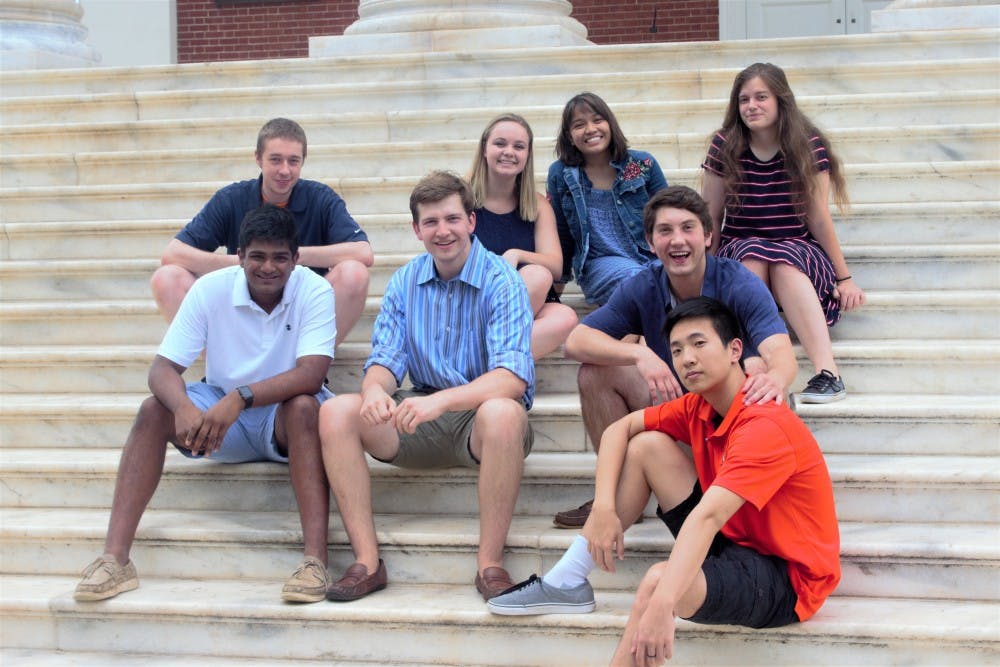The University’s iGem team, comprised of eight students, is working to improve the wastewater treatment process by manipulating a bacterium called Paracoccus denitrificans.
iGem, which stands for international genetically engineered machines, is a worldwide competition where primarily undergraduate students build genetically engineered systems.
As explained on iGem.org, “iGEM teams work inside and outside the lab, creating sophisticated projects that strive to create a positive contribution to their communities and the world.”
According to Steven Scherping, fourth-year College student and iGem team member, the team — tentatively named “Sewage PD” after the organism they work with, Paracoccus denitrificans — went through several ideas before arriving at their idea for the November competition. They decided to engineer a bacteria to both nitrify and denitrify wastewater — key parts of the wastewater cleaning process.
This research is necessary because wastewater contains ammonia (NH3) and ammonium (NH4+) — both of which are toxic nitrogen compounds. The current treatment process uses two different bacteria to remove these dangerous compounds.
According to Scherping, the bacterium Nitrosomonas europaea (NE) performs the first step in the process — turning ammonia and ammonium into nitrates. These nitrates are still harmful, so a second bacterium, Paracoccus denitrificans (PD), turns the nitrates into nitrogen gas. Nitrogen gas is not harmful — it makes up 78 percent of the atmosphere.
While this process is very efficient, it is also very energy-intensive. The bacterium NE requires oxygen to turn ammonia into nitrates — this requires huge fans to shoot air into the wastewater so that the bacteria can function properly. The second bacterium, however, is much more efficient — it does not require any inputs to do its job of turning nitrates into nitrogen gas.
According to Scherping, the team is attempting to artificially synthesize three key genes from the Nitrosomonas, and insert them into the Paracoccus. This is novel for two reasons – there are currently very few organisms that can both nitrify and denitrify, and the success of this project could help reduce wastewater cleaning costs. But according to Scherping, it is also notable that the team is using the Paracoccus over the more commonly used E. coli.
“We are using this Paracoccus denitrificans as our chassis organism, and that's something that hasn't really ever been done before,” Scherping said. “Synthetic biology mostly uses E. coli, because it's well characterized and used in a bunch of different functions, and it's a very robust microorganism. So a lot of the challenge in our project has been getting our Paracoccus denitrificans to grow in ways that we can control, and then putting in these genes.”
While both Scherping and team captain, second-year Engineering student Vik Seshadri, agree that working with Paracoccus can be difficult, Seshadri said that the freedom and lack of structure of the iGem competition to be one of their biggest challenges.
“You have to design your own project — it’s entirely from scratch,” Seshadri said. “For us that was a really big hurdle, because I have to be able to say ‘hey, how do I test something out, how do I design an experiment’…With seven other people who have as little to no experience as I do.”
However, the team does receive some guidance on the project from their advisors — Keith Kozminski, associate professor of biology, and Jason Papin, professor of biomedical engineering. Seshadri said the professors’ mentorship is hands-off — the mentors are there to answer questions and check on the team periodically, but the team overall works independently.
According to Papin, he has advised the team since it started at the University in 2007.
“I primarily advise on the computational modeling component,” Papin said in an email statement. “This year, I’ve provided guidance on computational tools that are available, strategies for modeling, etc.”
Despite the heavy lab aspect of the project — Scherping estimates team members spend 40-50 hours a week in lab during the summer and 10-20 hours a week in lab during the school year — the project has several non-lab components.
“One component of the project is human practices,” Scherping said. “So human practices is how our project influences the community and how the community influences our project.”
This involves engaging with experts in the community, from environmental science professors at the University to people at the local wastewater treatment facility. The team is also running an art competition in Charlottesville-area schools to introduce synthetic biology to high school and middle school students in a fun way.
According to Scherping, iGem also focuses on collaboration among teams. In July, Sewage PD hosted a conference for other teams in the mid-Atlantic region to come to the University and discuss their projects. They are also collaborating with teams around the world to compile a document of regional differences in GMO regulations.
Seshadri emphasizes the diversity of skills necessary for the team — iGem is not just for biology majors. Coding, writing and entrepreneurship are all large components of their project.







